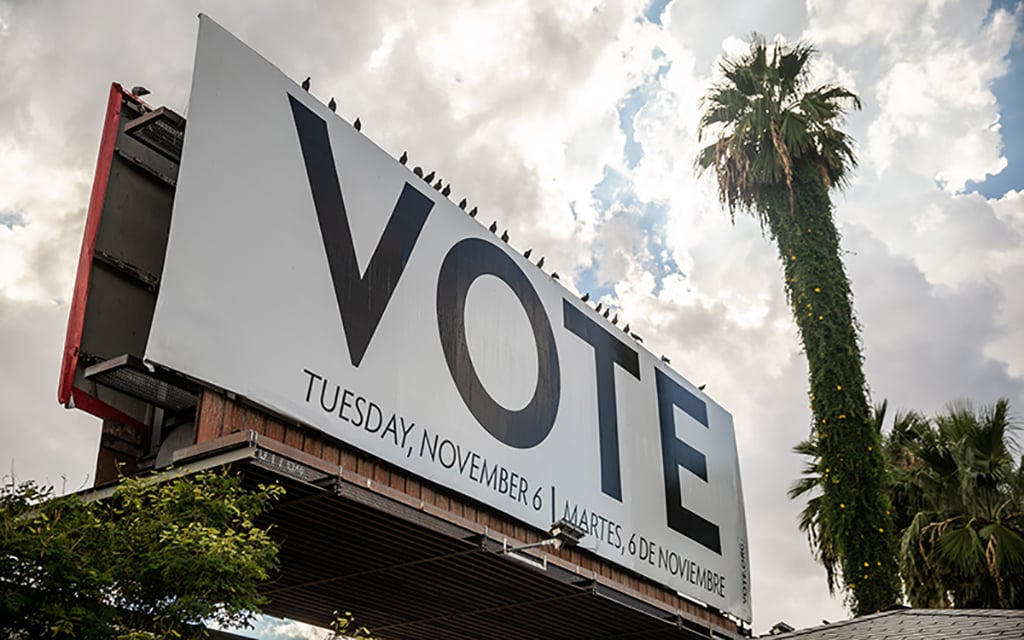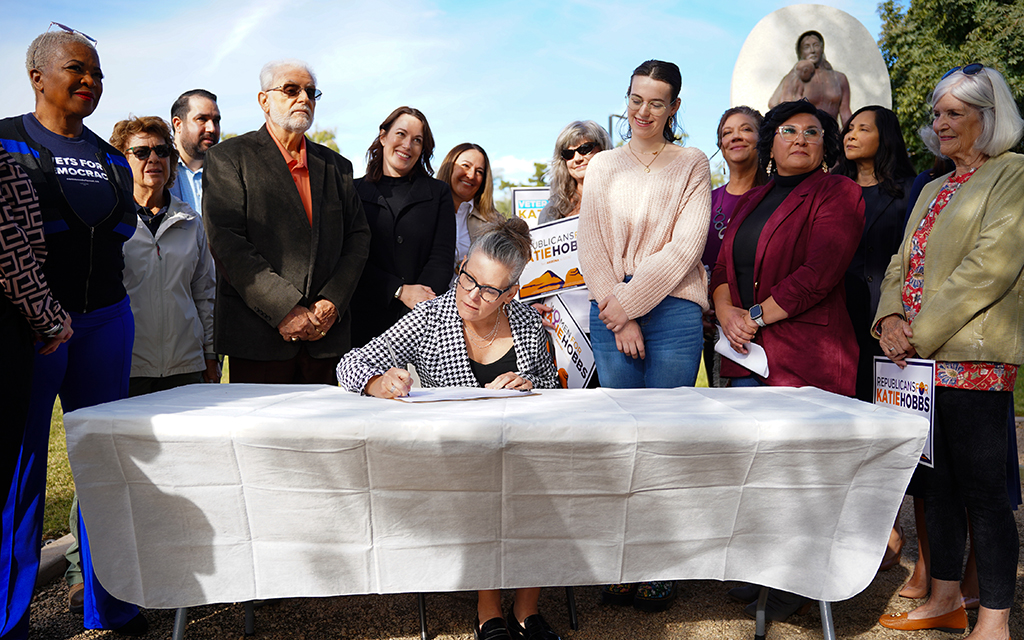WASHINGTON – Election 2024 in Arizona is expected to bring a high-profile, three-way Senate race and campaigns for two open House seats that have drawn dozens of big-name candidates.
But analysts say it’s two other House races in Arizona that stand to be “two of the most competitive House districts in the whole country.”
Rep. Juan Ciscomani, R-Tucson, and Rep. David Schweikert, R-Fountain Hills, were listed as the 11th and 15th most-vulnerable House members, respectively, on the National Journal’s initial 2024 House Power Rankings. With control of the House hinging on just a handful of seats, the Democratic Congressional Campaign Committee has targeted Ciscomani and Schweikert among 33 competitive districts.
“You’re going to have those two sucking up a lot of political oxygen because of what’s at stake nationally,” said Jason Rose, an Arizona-based political consultant.
“Underscored by all the trauma we saw in picking the Republican speaker, because the majority is so narrow … those are two seats that definitely could flip in favor of the Democrats depending on how everything plays out,” Rose said.
More Election 2024:

• Lesko’s retirement starts stampede of high-profile hopefuls in 8th District
• Still a shaman, but not the ‘Q’ shaman: Chansley rebrands for Congress bid
• Race to replace Gallego in Democrat-heavy 3rd District draws crowded field
• Number of Latino voters is growing, but experts wonder in which direction
Kyle Kondik, elections analyst at the Center for Politics at the University of Virginia, said that Ciscomani and Schweikert both represent districts that President Joe Biden won narrowly in 2020.
“Arizona is going to be one of the handful of most competitive states for president,” Kondik said. “And at least two congressional districts, in Schweikert and Ciscomani’s seats, that are going to be among the most competitive in the nation.”
The Cook Political Report calls Ciscomani’s 6th District and Schweikert’s 1st District toss-ups in its ranking of 2024 House races, while Inside Elections says the two districts currently tilt Republican.
In terms of voter registration numbers, Schweikert is a little more comfortable: The 1st District was 37% Republican, nearly 34% unaffiliated and about 28% Democratic, according to October figures from the Arizona Secretary of State’s Office. In Ciscomani’s district, by contrast, Republicans accounted for 35% of registered voters, with 33% unaffiliated and 31% Democrats. Libertarians and No Labels Party voters made up the balance in both districts.
So far, nine challengers have lined up to take on Schweikert, including seven Democrats, a Republican and an independent. Schweikert, who was first elected in 2012, has successfully beat back challenges before, but his margin of victory has steadily narrowed until 2022, when he beat Democrat Jevin Hodge by a 50.4% to 49.6% margin.
Among the Democratic challengers are veteran politicians who are already raising large amounts of money for the campaign, according to the Federal Election Commission, which said two had raised more than $1 million by Sept. 30 to Schweikert’s $1.35 million in the same period.
But Rose said Schweikert should not be underestimated.
“Schweikert has proven himself … he hasn’t lost a lot since then and he is ruthless in terms of primary challenges,” Rose said. “David Schweikert is a tough S.O.B. in the political arena, and so whoever comes out of the Democrat side better be prepared.”
Ciscomani, a freshman, currently has two Republican challengers, one Libertarian and three Democrats – including Kirsten Engel, the 2022 Democratic nominee whom Ciscomani beat 50.7% to 49.2% – a margin of 5,232 votes out of almost 350,000 cast.
Rose called Ciscomani “one of the best and brightest in the Republican party. He’s that good of a story and that good of a person and that good of an office holder.”
But Paul Bentz, senior vice president of research and strategy at HighGround Inc., said that the two races could be decided by voter turnout, with higher turnout tending to favor Democrats.
Polls showing that “Biden is not particularly popular” could depress turnout among young voters, Bentz said, which would be bad for Democrats. But that could be offset by the issue of abortion, which advocates are trying to put on the 2024 ballot in Arizona.
“As we saw in Ohio and in other places, the issue of abortion has really driven voter turnout, particularly among younger voters,” Bentz said. That could turn what might be a “traditionally low voter turnout presidential election … in the lower 70s” and push it closer to something like 78% turnout.
Bentz said that if abortion gets on the state ballot, it could hurt both Ciscomani and Schweikert. Ciscomani cosponsored H.R. 7, which would prohibit the use of federal funding for abortions, while Schweikert has voted to ban access to mifepristone, a widely used abortion medication.
While both races are what Bentz calls “very heated,” he thinks the District 1 race could have an impact nationally.

Republicans control the House now with a razor-thin 221-213 margin, meaning Democrats would be back in charge if they pick up just five seats in 2024. So both parties will be paying close attention to seats held by GOP Reps. David Schweikert of Fountain Hills and Juan Ciscomani of Tucson, whose reelection chances have been rated toss-ups my analysts. (Photo by Lawrence Jackson/The White House)
“Ultimately Schweikert’s seat will be one of the most watched races in the country because the road to the White House goes through Arizona and the road to Arizona goes through that portion of Maricopa County,” Bentz said. “That’s where Schweikert’s district has a significant portion of legislative districts.
“They’re going to be determining the statewide outcome and … the outcome of that national race as well,” he said.
But Kondik said that it’s nothing new for Arizona to be a deciding factor nationally, and experts expect that won’t be changing anytime soon.
“Just as Arizona has been a real focus in, really the last three federal elections – ’18, ’20, ’22 – I think it’s going to continue to be in 2024,” Kondik said.

